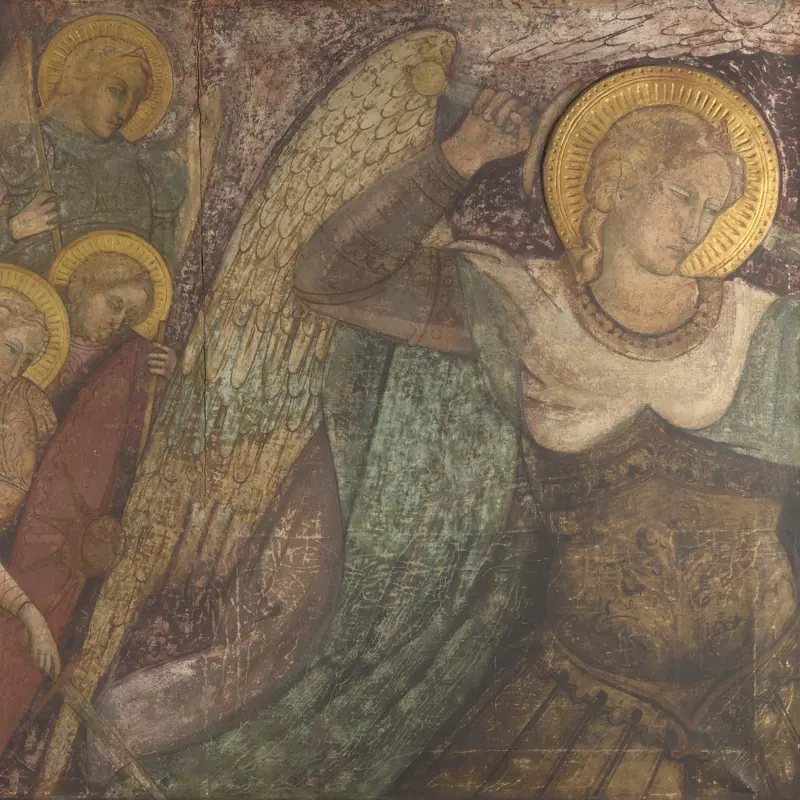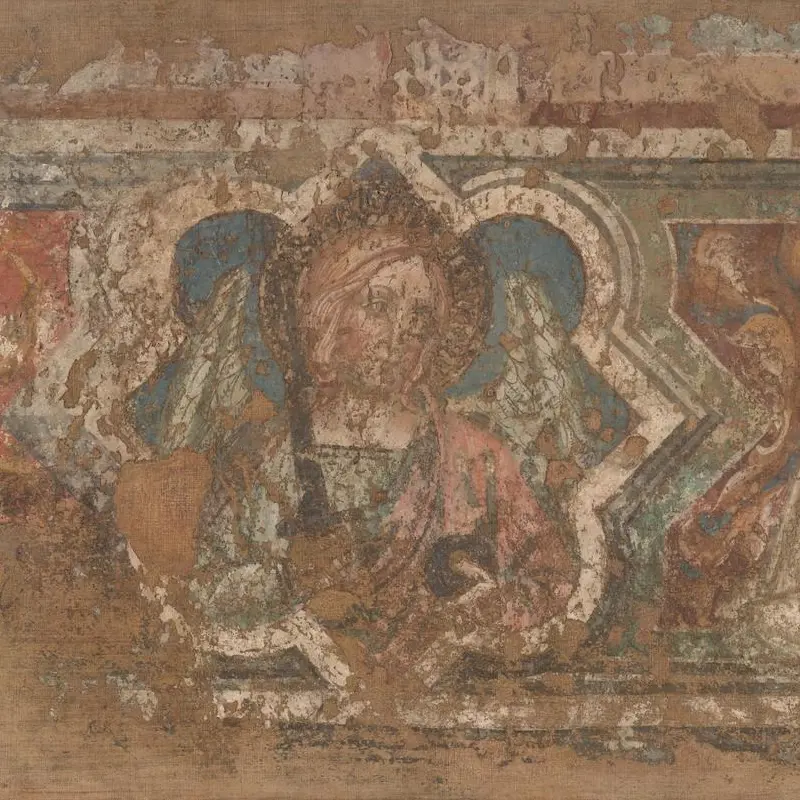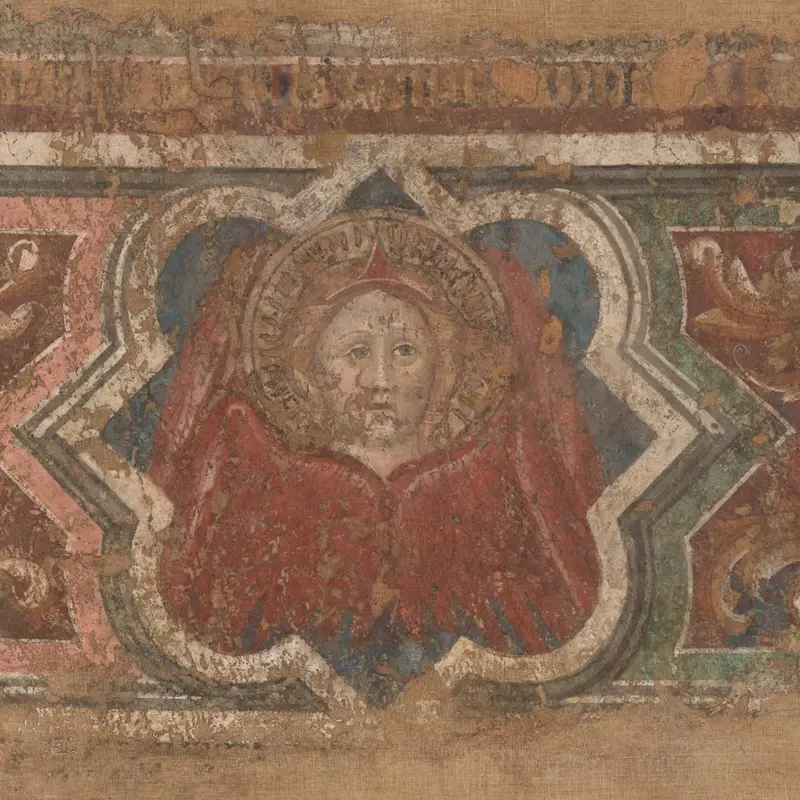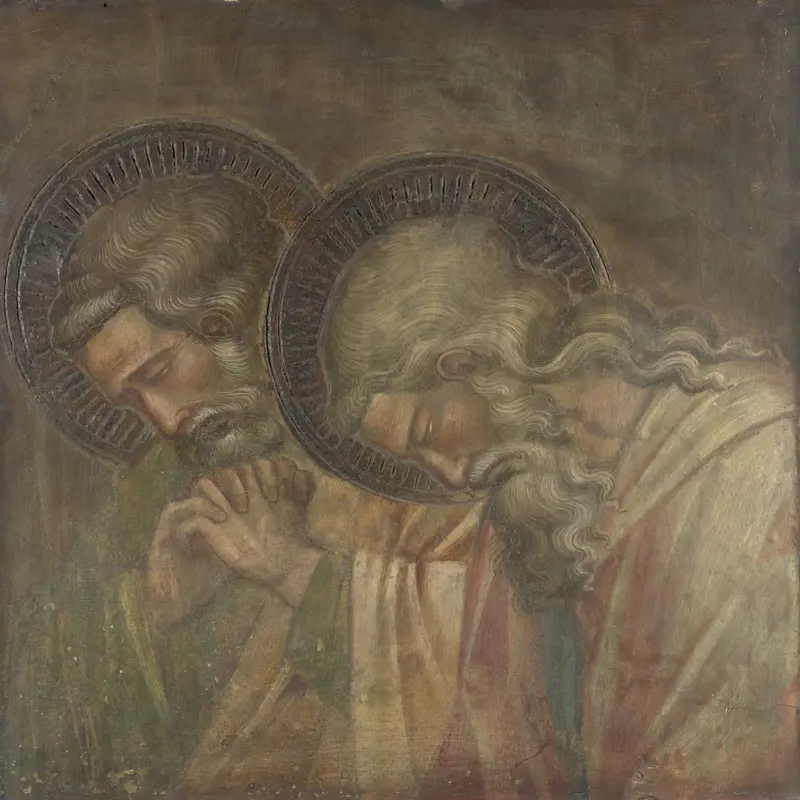Spinello Aretino, 'Decorative Border with a Seraph and Saint Catherine', about 1408-10
About the work
Overview
This fragment comes from the border decoration of a large painting in fresco – a technique that involved painting directly onto wet plaster – which showed the fall of Lucifer, the rebel angel who was cast out of heaven. It once decorated a wall of the church of the confraternity of Sant' Angelo in Arezzo. There are two other fragments in the National Gallery’s collection.
The fragment shows two figures in decorative shapes with white borders. The creature with red wings on the left is a Seraph, a type of angelic being; on the right is Saint Catherine, identifiable by the traces of a spiked wheel (she was tortured on one). Their haloes were originally gilded but now only a tin underlayer remains. The spaces between are decorated with foliage, painted to look like stone carvings.
Key facts
Details
- Full title
- Decorative Border with a Seraph and Saint Catherine
- Artist
- Spinello Aretino
- Artist dates
- Born 1345-52, died 1410
- Part of the series
- Arezzo Fresco Fragments
- Date made
- About 1408-10
- Medium and support
- Fresco with areas of secco, transferred to canvas
- Dimensions
- 64.5 × 130 cm
- Acquisition credit
- Presented by Sir A.H. Layard, 1886
- Inventory number
- NG1216.3
- Location
- Not on display
- Collection
- Main Collection
- Previous owners
Provenance
Additional information
Text extracted from the ‘Provenance’ section of the catalogue entry in Dillian Gordon, ‘National Gallery Catalogues: The Italian Paintings before 1400’, London 2011; for further information, see the full catalogue entry.
Bibliography
-
1951Davies, Martin, National Gallery Catalogues: The Earlier Italian Schools, London 1951
-
1986Davies, Martin, National Gallery Catalogues: The Earlier Italian Schools, revised edn, London 1986
-
1988Gordon, Dillian, National Gallery Catalogues: The Early Italian Schools before 1400, revised edn, London 1988
-
2001
C. Baker and T. Henry, The National Gallery: Complete Illustrated Catalogue, London 2001
-
2011Gordon, Dillian, National Gallery Catalogues: The Italian Paintings before 1400, London 2011
About this record
If you know more about this work or have spotted an error, please contact us. Please note that exhibition histories are listed from 2009 onwards. Bibliographies may not be complete; more comprehensive information is available in the National Gallery Library.
Images
About the series: Arezzo Fresco Fragments
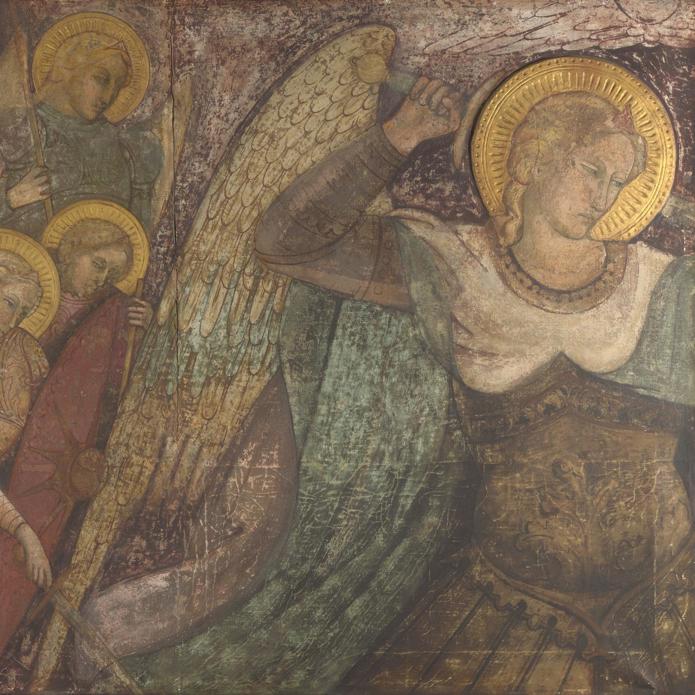
Overview
These three paintings are fragments of a much larger work in fresco, a technique that involved painting directly on to wet plaster. The whole image showed the fall of Lucifer, the rebel angel who was cast out of heaven and associated with the devil in Christian thought.
The fresco decorated a wall in the church of the confraternity of Sant'Angelo, Arezzo. Its original appearance is recorded in engravings and drawings made in the nineteenth century.
The large fragment shows Saint Michael the Archangel ready to strike Lucifer, while two smaller ones come from the border of the work and show a band of figures set within decorative shapes.These fragments were purchased in 1855 by the archaeologist and explorer Austen Henry Layard, and presented to the National Gallery in 1886. Layard was a founder of the Arundel Society, which aimed to document frescoes in Italian churches and palaces through drawings and art-historical descriptions.

